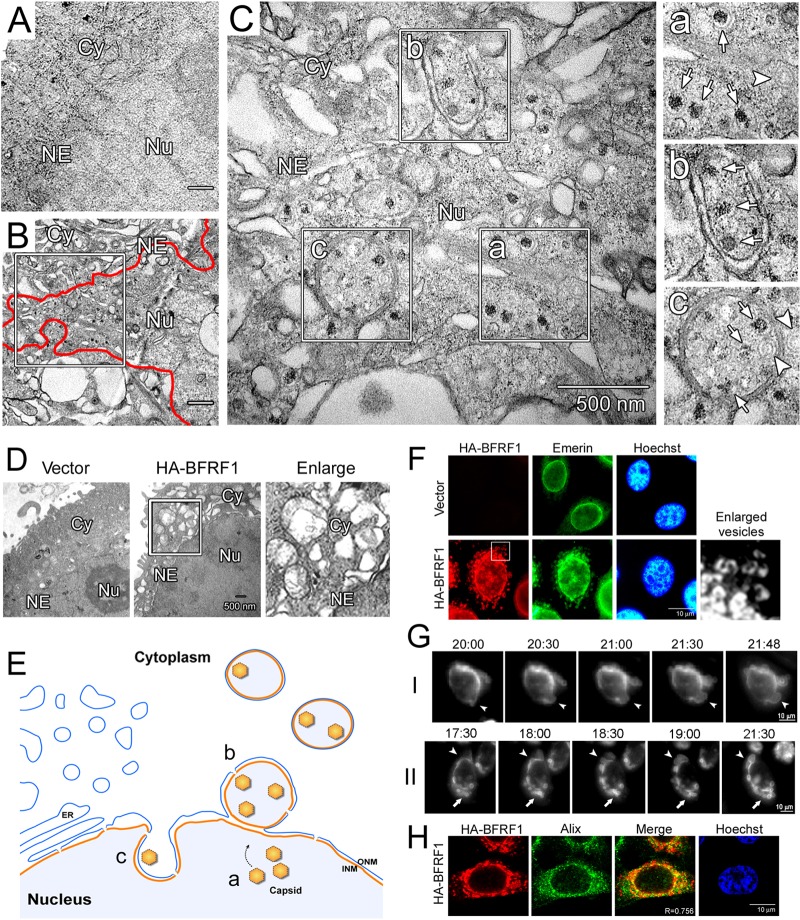FIG 1.
EBV reactivation or BFRF1 expression induces reorganization of the NE and NE-derived cytoplasmic vesicles. (A) Negatively stained EM images of vector plasmid-transfected NA cells. Cy, cytoplasm; Nu, nucleus; NE, nuclear envelope. (B) EM images of Rta-transfected NA cells at 72 h posttransfection, with EBV capsid production. The red line indicates the edge of the nuclear membrane, and the boxed region is enlarged in panel C. (C) EBV replication induced not only the production of viral C-type (a, arrows) or A-type (a, arrowhead) capsids in the nucleus, but also the formation of viral-capsid-containing perinuclear vesicles (b) and invagination (c) from the nuclear envelope. The images on the right are enlargements of the boxed regions on the left. Arrows, C-type capsids; arrowheads, A-type capsids. (D) EM images of HA-BFRF1- or vector plasmid-transfected HeLa cells at 24 h posttransfection. The boxed region is enlarged on the right. (E) Subcellular ultrastructure in NA cells with replicating EBV. a, b, and c refer to the enlarged regions in panel C. ONM, outer nuclear membrane. Reactivation of EBV induced reorganization of the nuclear membrane and the formation of capsid-containing vesicles. (F) Confocal images of emerin in HA-BFRF1-expressing HeLa cells. HA-BFRF1 and emerin were visualized by indirect immunofluorescence at 24 h posttransfection. The boxed region is enlarged on the right. (G) Live-cell imaging of BFRF1-induced vesicle formation. HeLa cells transfected with CFP-BFRF1 were subjected to time-lapse fluorescent imaging analysis from 20 to 22 h posttransfection at 10-min intervals (indicated as hour:minute. The expression of CFP-BFRF1 induced a large vesicle protruding from the NE (I and II, arrowheads), which subsequently moved to the cytoplasm (II, arrows; see Movie S1 in the supplemental material). (H) Confocal images of Alix in HA-BFRF1-expressing HeLa cells. HA-BFRF1 and Alix were visualized by indirect immunofluorescence at 24 h posttransfection.

